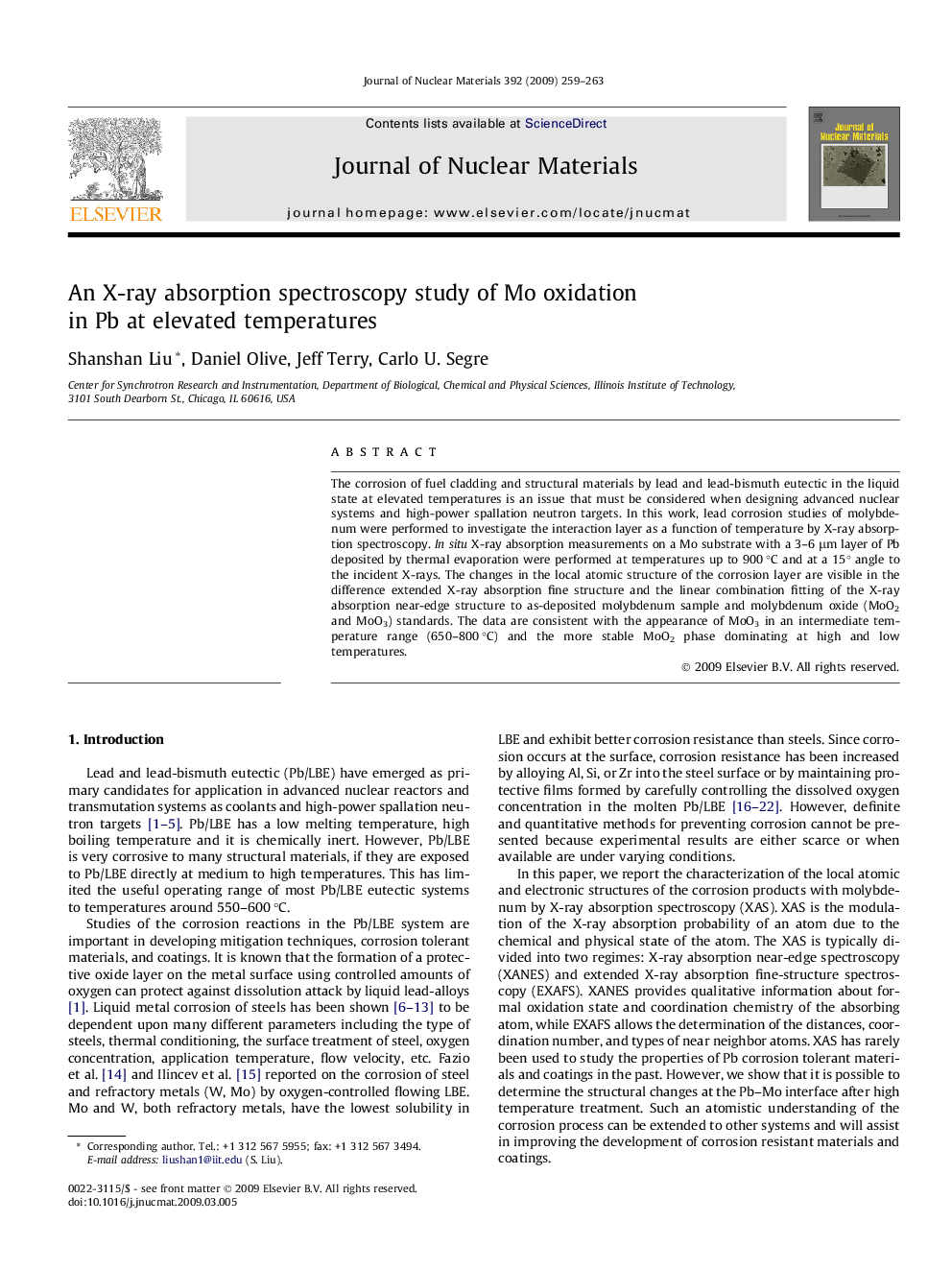| Article ID | Journal | Published Year | Pages | File Type |
|---|---|---|---|---|
| 1568421 | Journal of Nuclear Materials | 2009 | 5 Pages |
The corrosion of fuel cladding and structural materials by lead and lead-bismuth eutectic in the liquid state at elevated temperatures is an issue that must be considered when designing advanced nuclear systems and high-power spallation neutron targets. In this work, lead corrosion studies of molybdenum were performed to investigate the interaction layer as a function of temperature by X-ray absorption spectroscopy. In situ X-ray absorption measurements on a Mo substrate with a 3–6 μm layer of Pb deposited by thermal evaporation were performed at temperatures up to 900 °C and at a 15° angle to the incident X-rays. The changes in the local atomic structure of the corrosion layer are visible in the difference extended X-ray absorption fine structure and the linear combination fitting of the X-ray absorption near-edge structure to as-deposited molybdenum sample and molybdenum oxide (MoO2 and MoO3) standards. The data are consistent with the appearance of MoO3 in an intermediate temperature range (650–800 °C) and the more stable MoO2 phase dominating at high and low temperatures.
